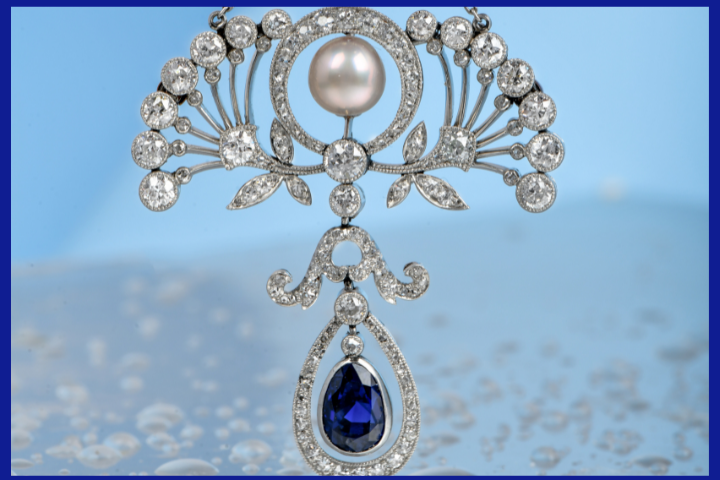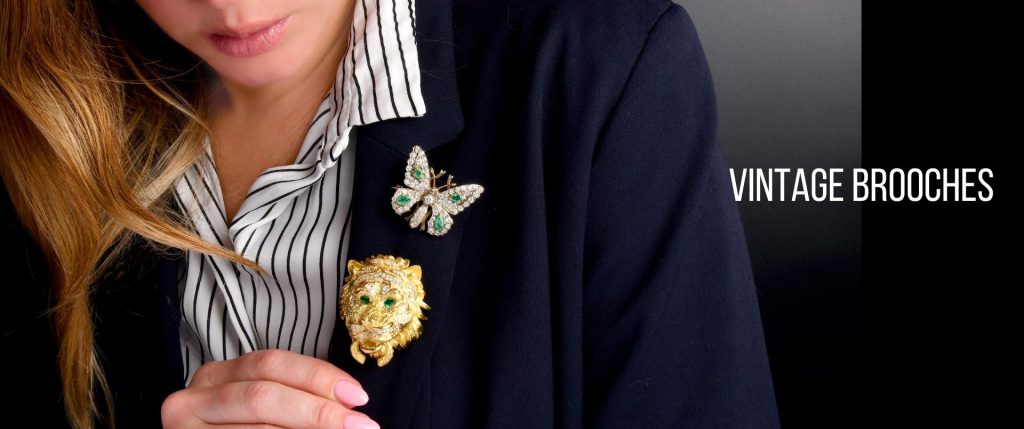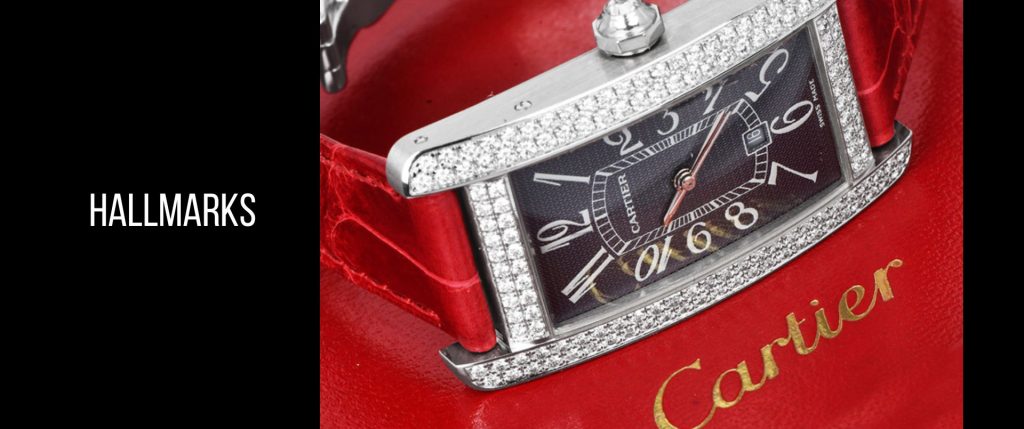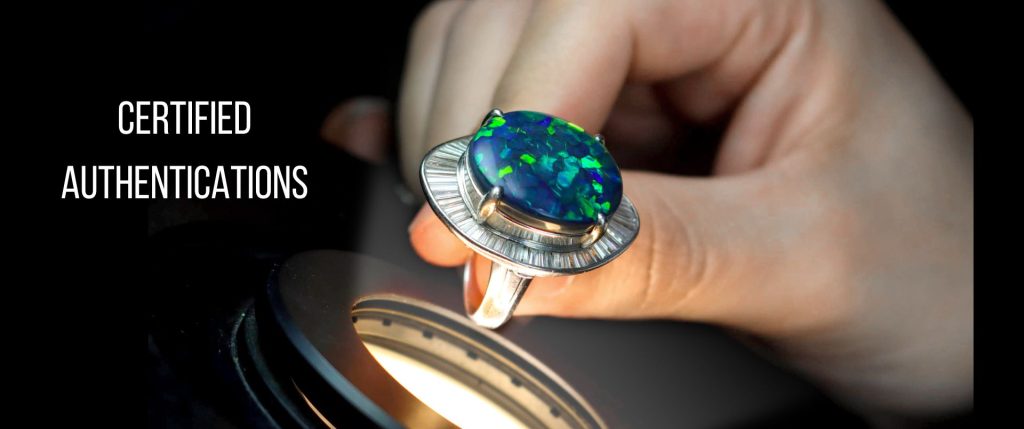
How to Identify and Authenticate Your Vintage Jewelry
Authenticating vintage jewelry is an exciting and rewarding process that requires a keen eye and a solid understanding of different eras, materials, and styles. Whether you’re a seasoned collector or new to the world of fine vintage jewelry, knowing how to identify authentic pieces is crucial. At Dover Jewelry, our GIA-certified gemologists and antique jewelry experts have compiled key tips and steps to help you authenticate vintage jewelry effectively.
Key Characteristics of Authentic Vintage Jewelry
When it comes to authenticating vintage jewelry, there are several key aspects to consider. By examining these factors, you can distinguish genuine vintage pieces from modern reproductions or fakes.
How do I know if my Brooch is Vintage or Estate?
Research Different Jewelry Eras
The first step in authenticating vintage jewelry is familiarizing yourself with various jewelry periods such as Art Deco, Art Nouveau, Victorian, and Retro. Each period has its own distinct design characteristics, from the geometric lines of Art Deco to the flowing, organic shapes of Art Nouveau. Recognizing these era-specific features will help you more easily identify authentic vintage jewelry.
Materials and Gemstones in Vintage Jewelry
Look closely at the materials used in the piece, as authentic vintage jewelry often features precious metals like gold, silver, and platinum. Many vintage pieces also include natural gemstones, such as diamonds, emeralds, rubies, and sapphires, which were commonly used in various settings. Understanding the origins of these gemstones and their quality can help you confirm whether they are natural or synthetic.
To learn more about gemstone authenticity, visit resources like GIA’s Gemology page.
Craftsmanship and Construction of Vintage Pieces
Vintage jewelry is often handmade, meaning that the craftsmanship can tell you a lot about its authenticity. Pay attention to intricate details such as fine engravings, quality gemstone settings, and overall construction. High-quality vintage jewelry often displays meticulous craftsmanship that sets it apart from mass-produced pieces.
Signs of Authenticity in Vintage Jewelry
Several signs can help you confirm the authenticity of vintage jewelry, even if the piece lacks a maker’s mark. These key indicators should be carefully examined:
Patina and Wear
As jewelry ages, it naturally develops a subtle patina or signs of wear, such as tarnish or light scratches. These signs of aging often enhance the authenticity of a vintage piece. The subtle wear and patina give a piece character and tell a story, helping you distinguish it from newly made jewelry.
Clasps and Closures: Vital Clues to Age
The design of clasps and closures can offer additional insight into the era of the piece. Different closure styles were popular during various periods, so identifying the type of clasp can help you authenticate vintage jewelry. Researching the type of clasp used in specific time periods can provide valuable clues.
Antique & Vintage Jewelry: Considering A Collection
Hallmarks and Marks: Key Indicators of Authenticity
When identifying vintage jewelry, hallmarks and maker’s marks are crucial to understanding a piece’s authenticity. These markings can tell you everything from the type of metal used to the designer’s identity.
Hallmarks in Vintage Jewelry
Hallmarks are stamped marks that confirm the purity of the metal used in the jewelry. For example, “925” indicates sterling silver, and “750” indicates 18K gold. These marks are vital in confirming the metal’s authenticity and quality.
Maker’s Marks: Identifying the Designer
Some vintage jewelry features maker’s marks, which are often initials, names, or symbols that identify the designer or jewelry manufacturer. Researching these marks can help you trace the origin of the piece, making it easier to confirm whether it is authentic vintage jewelry.
Other Marks to Look For
In addition to hallmarks and maker’s marks, vintage jewelry may feature other markings such as date stamps, designer signatures, patent numbers, and trademarks. These can provide more context and help verify the piece’s age and authenticity. Researching these marks can further confirm the jewelry’s provenance.
Expert Consultation for Authenticating Vintage Jewelry
If you’re ever uncertain about the authenticity of a piece, consulting an expert is always a wise decision. Dover Jewelry offers authentication services, where our GIA-certified gemologists and antique jewelry experts can examine your piece and provide a detailed report on its authenticity.
Contact Dover Jewelry for more information on expert consultation services.
Understanding the Difference Between Estate, Antique, and Vintage Jewelry
It’s essential to understand the difference between estate, antique, and vintage jewelry, as the terms are often used interchangeably but have distinct meanings. Antique jewelry refers to pieces that are over 100 years old, vintage jewelry typically includes pieces that are at least 20 years old but less than 100 years old, and estate jewelry refers to pre-owned pieces that may be either antique or vintage.
What is the Difference between Estate, Antique and Vintage Jewelry?
Use Online Resources for Identifying Vintage Jewelry
There are several online forums, databases, and platforms dedicated to vintage jewelry that can assist you in identifying pieces. These resources allow you to research and connect with other collectors and experts, expanding your knowledge of different jewelry styles and trends.
Provenance and Its Role in Authentication
Provenance—the history of ownership—plays a significant role in understanding the authenticity and value of vintage jewelry. By gathering information about a piece’s previous owners and its journey, you can gain insight into its authenticity and even increase its value.






